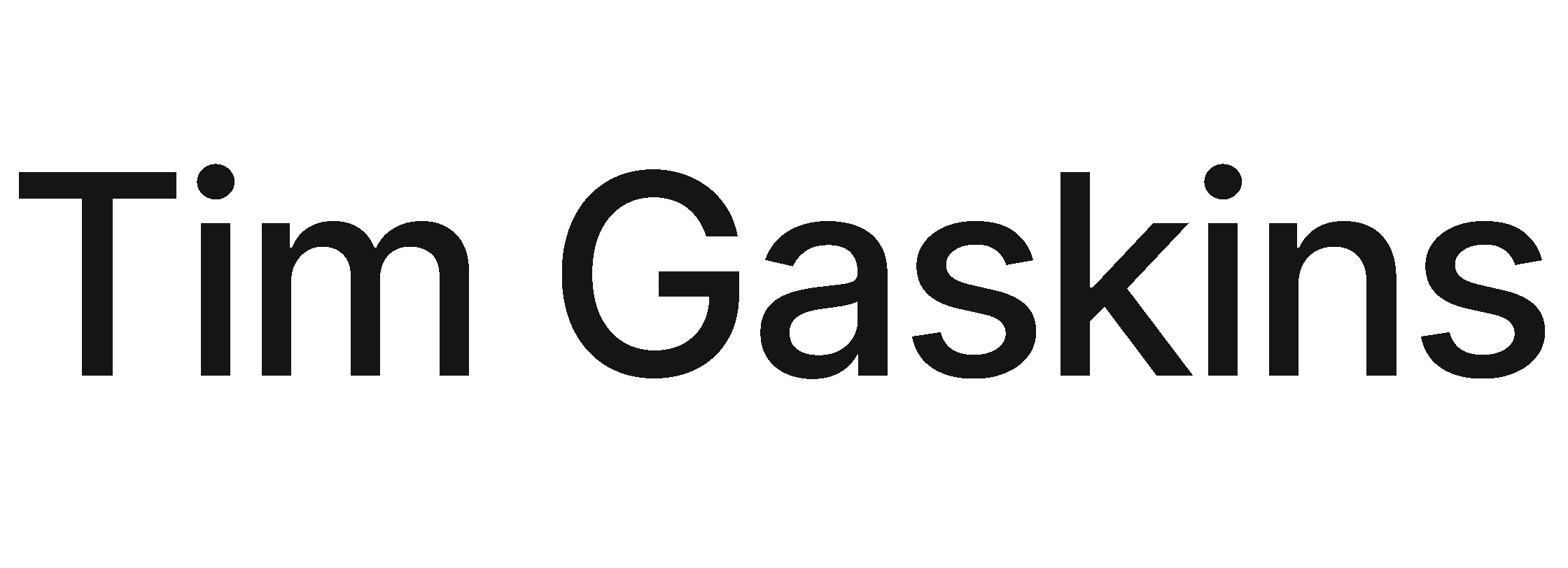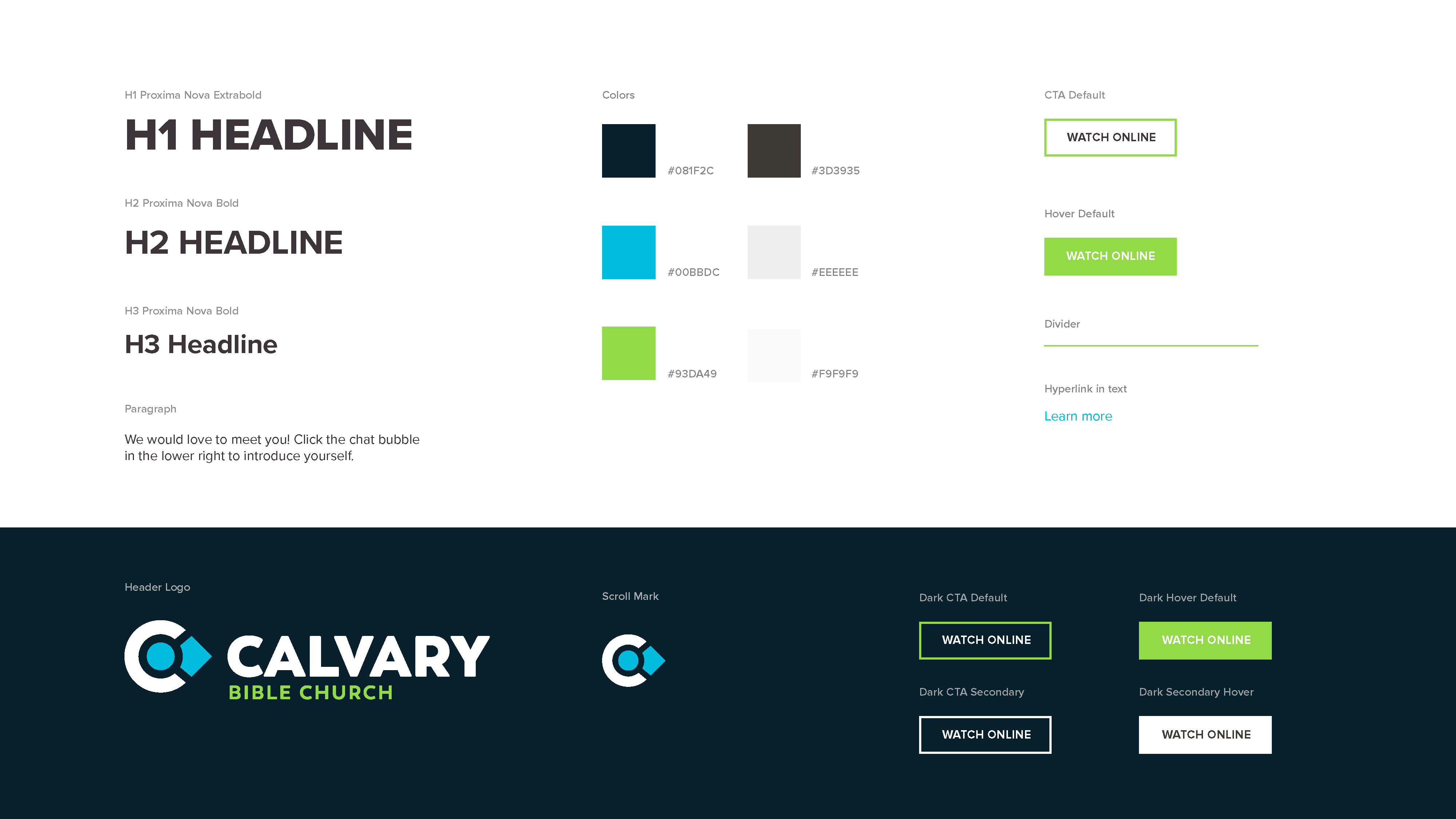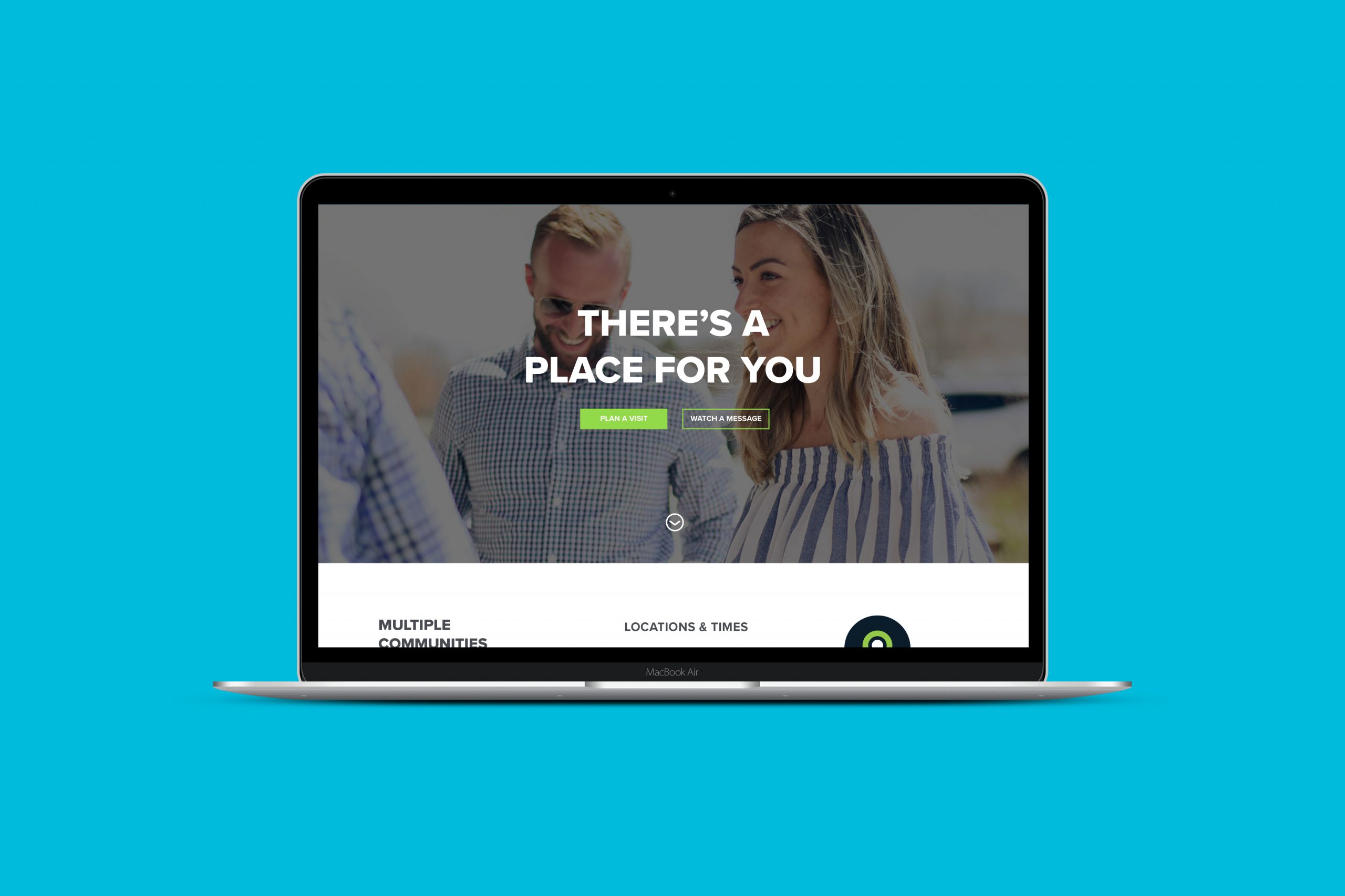
CASE STUDY
Guest Web Experience
A strategy and experience pathway for guests.
I researched, designed, and created the guest web experience for Calvary, a multi-campus church with locations in Boulder, Erie, and Thornton, Colorado. Each weekend, more than 1,600 people attend in person or watch online. They believe people benefit from connecting in community, so they offer weekly groups for all ages of adults and programs for families.
During my time as the digital communications director, the organization expanded to a third physical location, created a weekend online community, and rebranded. I designed, developed, and launched a new website.
Role
UX Strategy
UI Design
Usability Testing
Web Development
Goals
Lower barriers for guests to connect with the community, become members, and start partnering with the organization.
On the website homepage, create a digital front door experience for the local campus communities, and put relationships and people over event programming.
Challenges
Prioritize messaging for new guests, while keeping resources for current members easily accessible.
Although secondary, resources for returning guests needed to be included in the design of the navigational system.
Target Audience
Our team created a user persona to reflect the organizational target audience of young families in their 30s and 40s who resonate with spirituality.
First-time guest users are the primary priority, returning users secondary.
Ideate

Wireframes
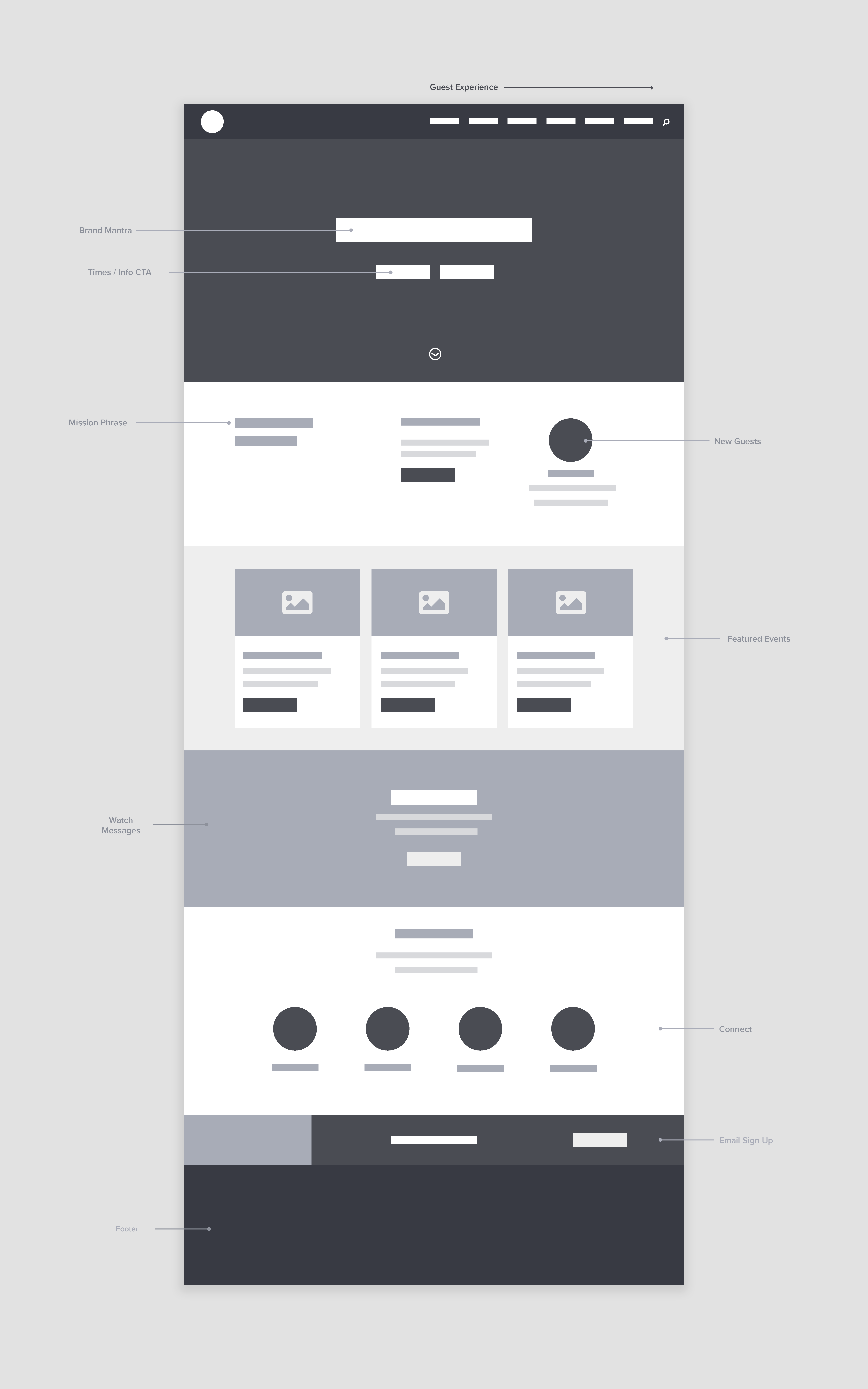
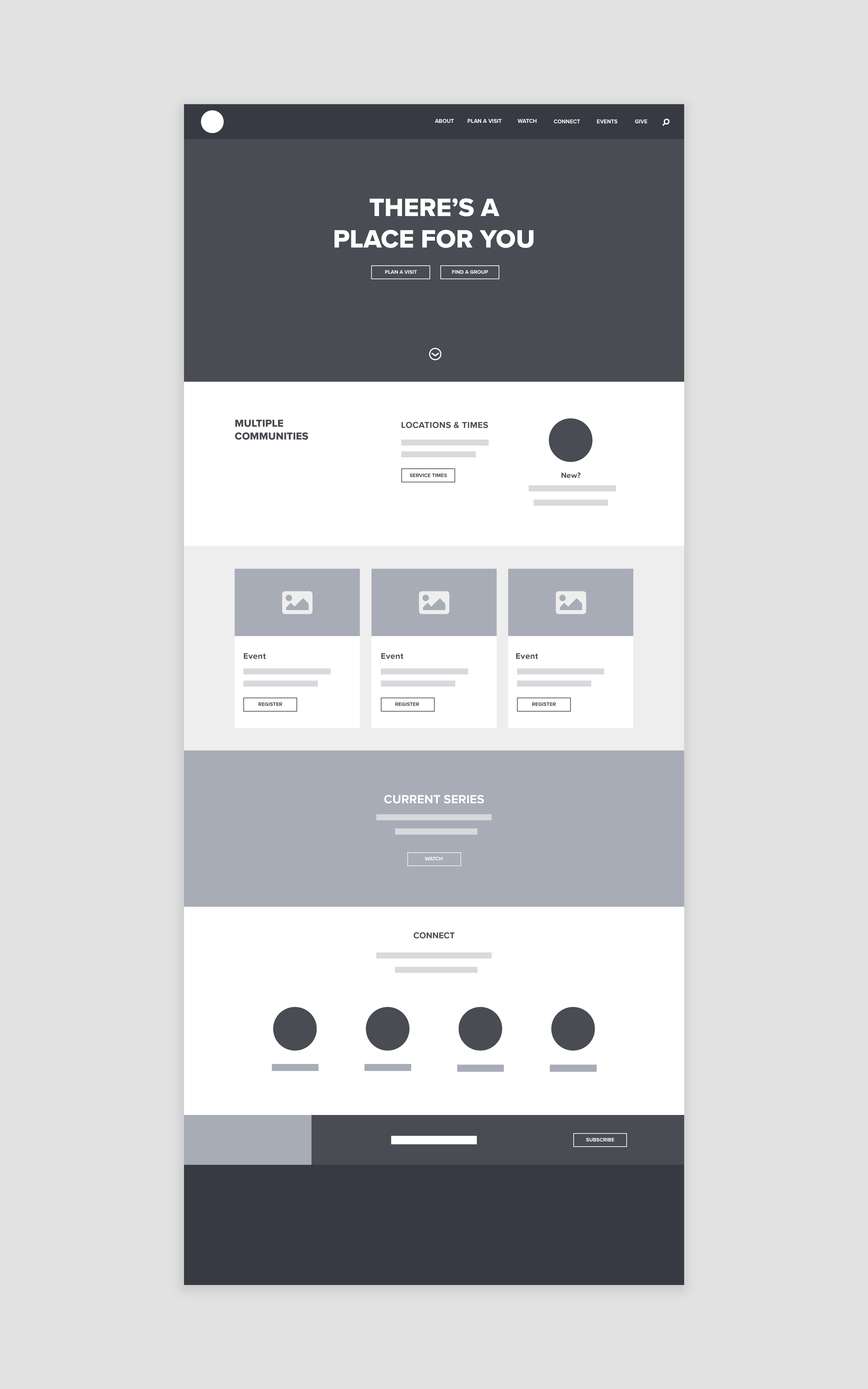
Branding and UI Design
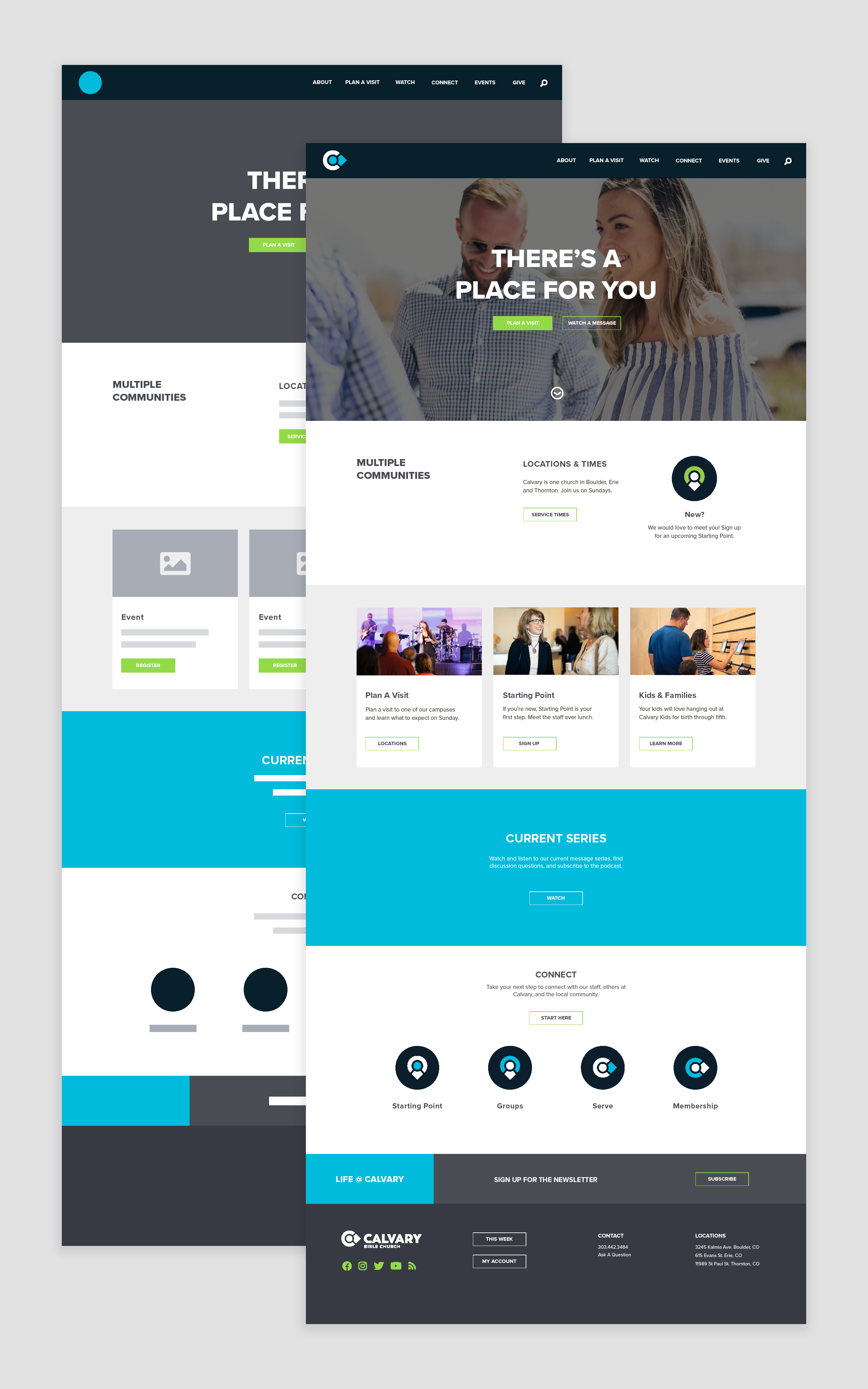
Usability Testing
20s single male, financial entrepreneur
Scenario
I gave each test user the same scenario in order to determine if they could figure out how to plan a visit and recorded the path they took to complete the action:
“You are looking to find a church in Boulder and navigated to calvarybible.com through a search engine. Your objective is to plan a visit to the Boulder campus.”
Findings
Be empathetic, flexible, and tolerant to any number of actions the user could possibly take.
Results
58%
increase in monthly users
29%
decrease in monthly bounce rate
100
guest online sign ups / year
